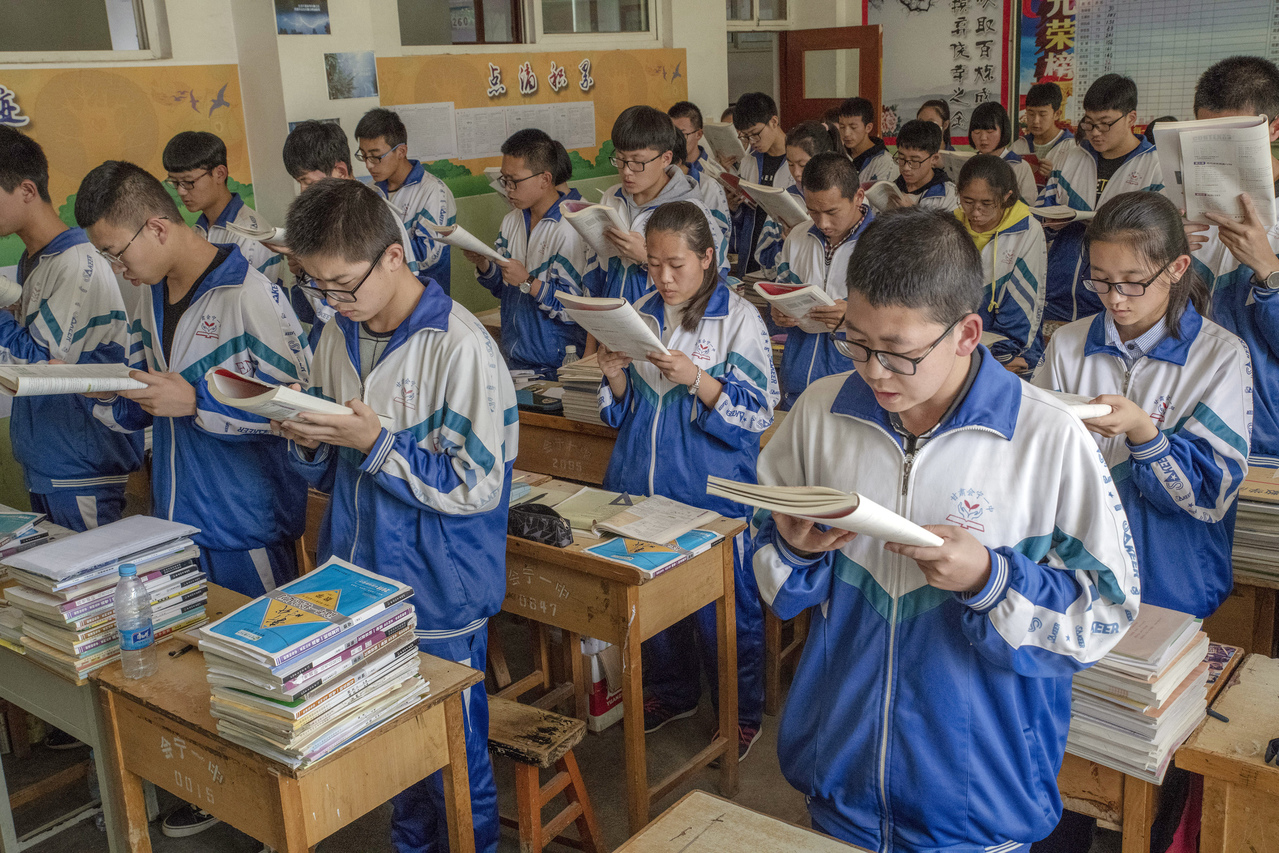Results of Pisa study not representative of China, say Chinese education experts
Sign up now: Get ST's newsletters delivered to your inbox

Students at Huining No. 1 High School in China's Gansu province. China has leapt to the top spot in the latest Programme for International Student Assessment (Pisa) study.
PHOTO: NYTIMES
Follow topic:
BEIJING - China's world-beating showing in an international education study released recently has led to some nationalistic fist-pumping by state media, but Chinese education experts are saying the results should be viewed with caution.
They attribute the country's leap to the top spot in the latest Programme for International Student Assessment (Pisa) study to a change in the cluster of the four provinces in the test, with Zhejiang province replacing Guangdong province.
This was the main reason for the stellar showing this year because China's most developed cities and its prosperous eastern region were representing the country, Professor Zhang Minxuan of Shanghai Normal University told The Straits Times.
Guangdong is China's largest provincial economy but development there is hugely unequal.
"Cities like Guangzhou and Shenzhen might be very prosperous, but they have a lot of rural migrant workers, the northern part of the province is also a bit like inner China. The fact that we placed first after Guangdong was replaced shows we have a long way to go," said Prof Zhang.
The Pisa study, which was released on Tuesday (Dec 3), tested 15-year-olds of 79 countries and regions in three subjects: reading, science and mathematics.
China was represented by students from four municipalities and provinces - Beijing, Shanghai, Jiangsu and Zhejiang - in the triennial study by the Organisation for Economic Cooperation and Development (OECD).
They beat their peers from Singapore, who came in second.
Some experts found the outcome astonishing as in the previous Pisa assessment in 2015, the mainland was placed 26th, 10th and 6th for reading, science and mathematics respectively.
The nationalist Global Times said in a commentary on Friday that this was evidence of the "unstoppable rise" of the country's education system, pointing out the enormous investments made in education in the past four decades.
Education investment, which form the bulk of government spending, jumped from 9.4 billion yuan in 1978, to 4 .6 trillion yuan last year.
"China is catching up rapidly with the developed world, including the US... The East Asian power's educational outcomes and national competitiveness are booming, which nobody can take away," said the newspaper.
But education experts like Prof Zhang were more circumspect, saying the new results show the extent of the unequal development of the country's education system.
This is the fourth time China has taken part in the Pisa test. It was represented by Shanghai city in the first two rounds of 2009 and 2012, when it also emerged tops.
In the 2015 test, the four municipalities and provinces representing it were Beijing, Shanghai, Jiangsu and Guangdong.
Renmin University education expert Cheng Fangping, who shares Prof Zhang's concern, said it was "problematic" to use China's results for comparison.
"These are all the most developed eastern region of China, it's not representative of the country," he added, noting that while education in these areas might be world-class, it was not the case in the country's western and central regions.
In those less developed areas, schools grapple with a shortage of teachers, and are staffed with educators who are less well-trained than their urban counterparts, said Professor Cheng.
The Pisa study hinted at these issues, indicating that more schools were reporting teacher shortages than the OECD average, with the problem being worse in disadvantaged schools.
OECD secretary-general Angel Gurria in a foreword to the study had defended China's results in the study, saying that while they did not represent China as a whole, the four regions had sizes comparable to a typical OECD country.
"What makes their achievement even more remarkable is that the level of income of these four Chinese regions is well below the OECD average. The quality of their schools today will feed into the strength of their economies tomorrow," he added.

